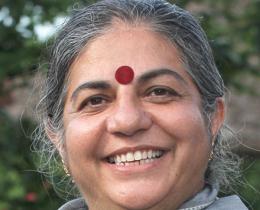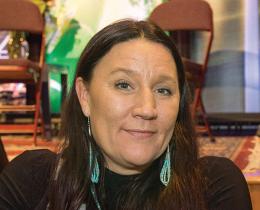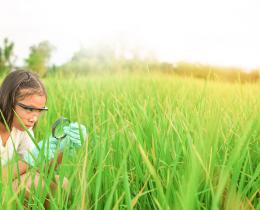Sometimes, the news about climate can seem overwhelming and the solutions far out of reach.
After all, few of us have the capacity to build wind turbines, establish solar farms, or implement on a large scale many of the solutions that were mapped, measured, and modeled by the nonprofit Project Drawdown in its New York Times best seller, Drawdown—The Most Comprehensive Plan Ever Proposed to Reverse Global Warming.
But Matt Stinchcomb, executive director of the nonprofit Good Work Institute, believes there is great potential in the everyday actions of common folk. The Good Work Institute seeks to empower a healthier economic system by connecting and supporting the local people, projects, and organizations that are leading the transition from extraction to regeneration.
“Even if," Stinchcomb said, "it feels as if your small actions don’t make a difference, if we all start taking small actions, then choice by choice, we shift the whole world."
With that in mind, Stinchcomb held a workshop in Rhinebeck, New York, designed to bring some of Drawdown’s interventions to the typical home kitchen. The idea was inspired by his attendance at the Omega Center for Sustainable Living’s Drawdown Learn conference in 2018.
“When it comes to individuals, the two biggest levers [to reversing global warming] that you can pull are in the kitchen—what you choose to eat, and how you handle your waste—and your car,” he said. “The kitchen is the least expensive intervention.”
It all comes down to menu planning and waste management. With that in mind, here are four Drawdown solutions that you can implement in your kitchen starting this week.
1) Shift to a plant-rich diet: This demand-side solution ranks number 4 in Drawdown’s top 100 solutions to global-warming. Why? Because agriculture, particularly cattle farming, is one of the largest contributors of greenhouse gases.
Typical cattle farming leads to deforestation, reducing nature's capacity to remove carbon dioxide from the atmosphere. And through its digestive process, a cow expels methane, which traps 30 times more heat than carbon dioxide. The Drawdown book puts it this way, “If cattle were their own nation, they would be the world’s third-largest emitter of greenhouse gases.”
A 2008 Carnegie Mellon University study found that beef, pork, and lamb production account for 30 percent of greenhouse gases in the U.S. food system, whereas chicken, fish, and eggs account for just 10 percent.
“The single most impactful action you can take," Stinchcomb said, "is to eat less meat." Or at least, choose chicken, fish or eggs over beef, pork, and lamb.
2) Restore tropical forests: This solution, coming in at number 5 among Drawdown’s top 100, might seem like a stretch for the average consumer. But many of our food choices can contribute to tropical deforestation.
Palm oil, a vegetable oil found in everything from processed foods to cosmetics, is a leading driver of deforestation in Asia. What’s more, palm oil hides in dozens of unfamiliar ingredients.
Instead, look for products that have 100 percent sunflower oil, corn oil, olive oil, coconut oil, or canola oil.
Sadly, palm oil is not the only product linked with deforestation. Coffee and cocoa are also contributors. Modern coffee cultivation is practiced in full sun, where yields can be higher and damage from the coffee rust fungus may be less, according to a report published by the Yale University School of Forestry and Environmental Science. But full sun coffee can be more susceptible to wind and frost damage, often requires expensive agrochemical inputs, and can lead to soil erosion, the report said.
Stinchcomb recommends purchasing products that bear the seal of the Rainforest Alliance or other earth-friendly certification programs.
3) Support conservation agriculture: Coming in at number 16 on the Drawdown list, this practice minimizes soil disturbance (no tilling), maintains soil cover (farmers leave crop residues after harvesting or they grow cover crops), and manages crop rotation (farmers change what is grown and where).
We can’t all be farmers. But we can choose to learn more about the back story of products at local farmers markets. “The lesson here is about shopping locally and knowing the farming practices,” Stinchcomb said.
4) Reduce food waste: Often a consideration after the meal has been prepared, this number 3 ranked solution is the easiest and most cost-effective step you can take.
The next time you scrape off your plate or throw out a tub of old yogurt, think of all the greenhouse gases that went into creating, shipping, and preparing the food you just threw out. And then consider all the greenhouse gases that will be used to take it away.
Menu planning, Stinchcomb said, is a useful tool in reducing food waste. So is composting, which is another Drawdown solution.
A simple test: If you can’t see the back of your refrigerator, it’s likely something is going to waste.
In all, a little detective work and planning can have an impact. And when those actions are shared, replicated, and multiplied, that impact can be substantial.
“Our future,” Stinchcomb said, “will be created by a big number of small actions, rather than a small number of very big ones.”










